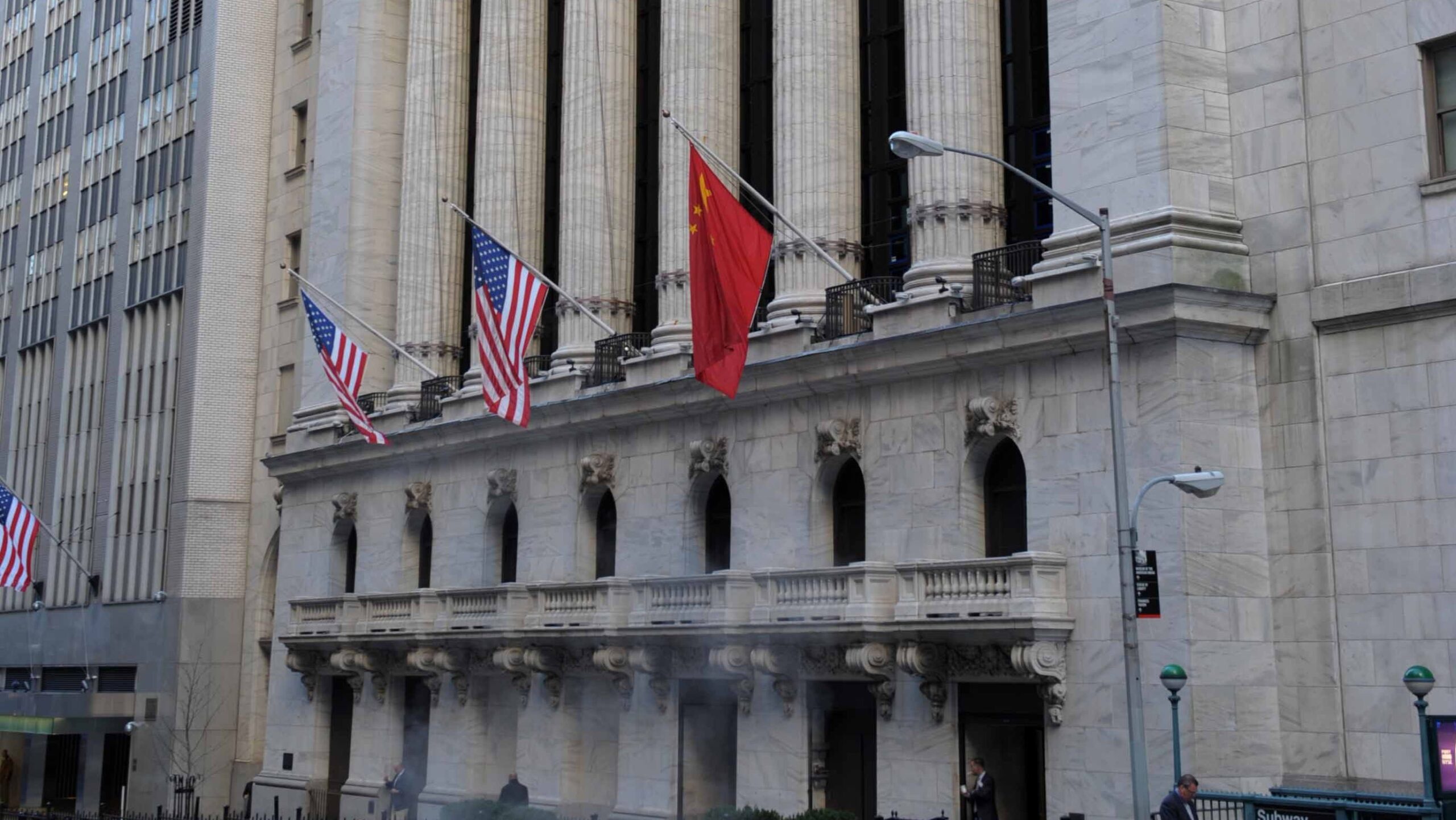Your cart is currently empty!
Tag: Risks
Secretary Austin’s secret hospitalizations ‘unnecessarily’ increased US national security risks, report finds
Defense Secretary Lloyd Austin’s secret hospitalizations “unnecessarily” increased America’s national security risk, according to a new report from the Department of Defense Office of Inspector General (OIG).
The Pentagon watchdog’s scathing 188-page review scrutinizes the secretary’s hospitalizations in December 2023, January 2024 and February 2024 and puts the blame on Austin’s team for communication lapses and failures to transfer authority.
OIG noted the main role Austin’s “strong desire for privacy about his medical condition” played in the breakdown of communications within the Pentagon, as well as between Defense Department and the White House and Congress.
Neither Austin’s chief of staff nor Deputy Defense Secretary Kathleen Hicks knew of his cancer diagnosis or the procedure he underwent in December 2023. In fact, OIG notes that “nearly all of his staff” were unaware of Austin’s medical condition and treatments.
DR. MARC SIEGEL: PATIENT PRIVACY DOESN’T COVER LLOYD AUSTIN’S SECRET HOSPITALIZATION

Secretary of Defense Lloyd Austin pauses while speaking during a media briefing at the Pentagon Nov. 17, 2021, in Washington, D.C. (AP Photo/Alex Brandon)
Evidence also allegedly indicates that, on Jan. 1, 2024, when he was taken to Walter Reed National Military Medical Center for “severe” pain, Austin requested the ambulance not use lights or sirens. Additionally, according to the report, Austin told his personal security officer not to notify anyone about the incident.
“No one on Secretary Austin’s staff knew the seriousness of his condition, including when his condition became worse and he was transferred to the Surgical Intensive Care Unit on January 2,” OIG noted in its report.
On Jan. 3, 2024, Austin’s chief of staff, Kelly Magsamen, texted the secretary’s junior military assistant, who was in the hospital with the secretary at the time. In her message, Magsamen urged the secretary to be more forthcoming about his condition.
“I wish [Secretary Austin] were a normal person but he’s the [Secretary of Defense]. We have a big institutional responsibility. He can’t just go totally dark on his staff. … Please pass to him that we can’t keep his hospitalization a secret forever. It’s kind of big deal for him to be in the [SICU]. And I’m worried sick,” Magsamen wrote, according to the OIG report.

U.S. Defense Secretary Lloyd Austin testifies before a House Armed Services Committee hearing about his failure to disclose his cancer diagnosis and subsequent hospitalizations on Capitol Hill in Washington, D.C., Feb. 29, 2024. (Reuters/Evelyn Hockstein)
The OIG also found that on Feb. 11, 2024, when Austin was once again unexpectedly hospitalized, his authorities were not transferred “until several hours later.” In reference to this incident, the OIG noted that “given the seriousness of his condition,” Austin’s authorities should have been transferred “hours earlier than ultimately occurred.”
After its review, the OIG gave the DOD 20 recommendations to “improve processes” and advised the department to act on them promptly.
PENTAGON RELEASES SUMMARY OF AUSTIN HOSPITAL REVIEW
Inspector General Robert Storch said in a statement that “while the DoD has taken some important steps to address these concerns, additional improvements are required to ensure the DoD’s readiness, transparency, and the fulfillment of its mission. These improvements are not just an administrative necessity; they are an operational and national security imperative.”
Ultimately, the report found that the Department of Defense lacked a “comprehensive” plan for handing off duties in the event of the secretary’s absence.
After the report’s release, a senior defense official admitted to reporters that Austin “made a mistake,” insisting “there was no scandal” and “there was no cover up.” The official also noted that “at every moment, either the Secretary of Defense or the Deputy Secretary of Defense was fully prepared to support the president.”

Defense Secretary Lloyd J. Austin testifies during a House Armed Services Committee hearing about his recent hospitalization and communication issues with President Biden in Rayburn Building Feb. 29, 2024. (Tom Williams/CQ-Roll Call, Inc via Getty Images)
CLICK HERE TO GET THE FOX NEWS APP
Austin acknowledged his office’s shortcomings in a February 2024 press conference shortly after the hospitalizations became public.
“I want to be crystal clear. We did not handle this right, and I did not handle this right,” Austin said at the time regarding his previous hospitalization. “I should have told the president about my cancer diagnosis. I should have also told my team and the American public, and I take full responsibility. I apologize to my teammates and to the American people.”
Liz Friden contributed to this report.
In a recent report released by a government watchdog group, it was revealed that Secretary of Defense Lloyd Austin’s secret hospitalizations during his time in office had “unnecessarily” increased US national security risks. The report found that Austin’s undisclosed health issues had led to disruptions in decision-making processes and communication within the Department of Defense, ultimately compromising the country’s security.Despite assurances from Austin’s office that his health issues were minor and did not impact his ability to carry out his duties, the report highlighted several instances where his absence or limited availability had resulted in delays and confusion in critical defense matters. This included missed meetings, delayed responses to crises, and a lack of transparency in decision-making processes.
The report also raised concerns about the potential for foreign adversaries to exploit Austin’s health vulnerabilities to gather intelligence or undermine US defense capabilities. By keeping his hospitalizations secret, Austin had inadvertently exposed the country to increased risks and vulnerabilities, according to the report.
As Secretary Austin faces mounting pressure to address these findings and improve transparency within the Department of Defense, the report serves as a stark reminder of the importance of maintaining open communication and accountability in matters of national security. Failure to do so could have serious consequences for the country’s defense posture and ability to respond to emerging threats.
Tags:
- Secretary Austin
- Hospitalizations
- National security risks
- Report findings
- US Secretary of Defense
- Government health issues
- Defense Department
- Security risks assessment
- Pentagon official health
- US national security concerns
#Secretary #Austins #secret #hospitalizations #unnecessarily #increased #national #security #risks #report #finds

The Potential Side Effects and Risks of l39867-001
L39867-001 is a medication that is commonly prescribed for a variety of conditions, including pain, inflammation, and fever. While this medication can be effective in treating these conditions, it is important to be aware of the potential side effects and risks associated with its use.One of the most common side effects of L39867-001 is gastrointestinal upset, including nausea, vomiting, and diarrhea. These side effects are usually mild and can often be managed by taking the medication with food or a glass of water. However, in some cases, these side effects can be more severe and may require medical attention.
Another potential side effect of L39867-001 is an increased risk of bleeding. This medication can interfere with the body’s ability to form blood clots, which can lead to excessive bleeding. This risk is higher in individuals who are taking blood thinners or have a history of bleeding disorders.
In some cases, L39867-001 can also cause allergic reactions, including rash, itching, and swelling of the face, lips, or tongue. If you experience any of these symptoms after taking L39867-001, it is important to seek medical attention immediately.
There are also some more serious risks associated with the use of L39867-001. For example, long-term use of this medication can increase the risk of kidney damage, liver damage, and heart problems. It is important to discuss these risks with your healthcare provider before starting treatment with L39867-001.
Overall, while L39867-001 can be an effective medication for treating pain, inflammation, and fever, it is important to be aware of the potential side effects and risks associated with its use. By discussing these risks with your healthcare provider and closely monitoring your symptoms while taking L39867-001, you can reduce the likelihood of experiencing any negative effects from this medication.
#Potential #Side #Effects #Risks #l39867001,l39867-001
Investors grapple with big risks, sending stocks lower to start 2025
Markets seesawed on the first trading day of 2025 as investors grappled with big questions ahead of a change of power in Washington.
U.S. stocks jumped in early trading, but by early afternoon the S&P 500 and Dow Jones Industrial indexes were down more than half a percent. The Nasdaq Composite Index, which contains more technology stocks, was off 127 points, or about 0.7%.
“The market can’t get a firm grip,” said Michael Grant, co-CIO and head of long/short strategies at Calamos Investments, which has $40 billion in assets.
“It’s easy to imagine that the second coming of Trump will amplify these extraordinary premiums that exist for U.S. risk assets,” Grant told USA Today. “The conundrum is that this is actually going on for a long time.”
Even though December’s “Santa Rally” fizzled, the S&P 500 gained more than 23% in 2024. Stocks have notched double-digit annual returns most years in the decade, thanks largely to strong corporate profits in many sectors of the economy and expansive fiscal policy.
Invest wisely: Best online brokers
Some unease about whether those trends can continue may be starting to creep into the financial markets, Grant said.
“Investors need to scale back their expectations,” he added. “They need to avoid areas like Tesla, the AI narrative, and excessively valued growth stocks. Because that’s where the real risk lies, particularly if interest rates stay higher for longer in 2025, which is one possible scenario.”
Shares of Tesla, Inc. were down nearly 7% in the afternoon after the electric-car company announced quarterly and full-year 2024 delivery numbers that were slightly lower than those in 2023. Investors may also have been reacting to the New Year’s Day explosion of a Tesla Cybertruck, which killed the driver, and is under investigation.

Investors are also digesting the likelihood that the Federal Reserve will have to scale back its interest rate cuts – if not reverse course and hike rates at some point in 2025. The 10-year U.S. Treasury note has gained nearly a full percentage point since mid-September, when the central bank delivered its first rate cut in four years. Bonds lose their value, making yields rise, when inflation is higher.
Investors grapple with big risks, sending stocks lower to start 2025As the new year kicks off, investors are facing a myriad of challenges and uncertainties that are weighing heavily on the stock market. From geopolitical tensions to rising inflation and interest rates, there are significant risks that are causing concern among investors.
One of the biggest concerns for investors is the ongoing geopolitical tensions between major world powers, such as the United States, China, and Russia. The possibility of conflict or trade disputes between these countries could have far-reaching implications for the global economy and financial markets.
In addition, inflation is on the rise, driven by soaring energy prices and supply chain disruptions. This has led central banks to consider raising interest rates in order to combat inflation, which could potentially slow down economic growth and corporate earnings.
Furthermore, the uncertainty surrounding the Omicron variant of COVID-19 and its potential impact on the economy is adding to the volatility in the markets. The rapid spread of the variant has led to renewed restrictions and lockdowns in some regions, further complicating the economic outlook.
All of these factors are contributing to the recent selloff in the stock market, with investors grappling with the big risks that lie ahead in 2025. While the situation remains uncertain, many analysts are urging investors to remain cautious and diversified in their portfolios in order to weather the storm.
As we navigate through these turbulent times, it is important for investors to stay informed, stay vigilant, and be prepared for any potential challenges that may arise. Only time will tell how these risks will play out in the market, but one thing is for certain – investors will need to be resilient and adaptable in order to succeed in this challenging environment.
Tags:
- Investors
- Risk management
- Stock market
- Investment strategies
- Market volatility
- Financial markets
- Economic outlook
- Stock performance
- Market trends
- Portfolio management
#Investors #grapple #big #risks #sending #stocks #start

Exploring the Benefits and Risks of Overclocking the i7-8700F Processor
Overclocking is a term that is often heard in the world of technology, particularly when it comes to processors. Overclocking refers to the process of increasing the clock speed of a processor beyond its default settings in order to achieve better performance. One popular processor that is often overclocked is the Intel i7-8700F.The i7-8700F is a powerful processor that is commonly used in high-performance gaming PCs and workstations. With a base clock speed of 3.2GHz and a maximum turbo frequency of 4.6GHz, the i7-8700F is already a formidable processor. However, some users may want to push it even further by overclocking it.
There are several benefits to overclocking the i7-8700F processor. One of the main advantages is that it can lead to increased performance in tasks that are CPU-intensive, such as gaming, video editing, and 3D rendering. By overclocking the processor, users can achieve higher frame rates in games, faster render times in video editing software, and smoother performance overall.
Overclocking can also be a cost-effective way to get more performance out of your existing hardware. Instead of having to upgrade to a more expensive processor, users can simply overclock their current one to achieve similar performance levels. This can be particularly beneficial for users who are on a budget or who want to extend the life of their current system.
However, there are also risks associated with overclocking the i7-8700F processor. One of the main risks is that it can lead to increased heat generation, which can cause the processor to overheat and potentially fail. This is why it is important to have adequate cooling solutions in place when overclocking, such as a high-quality CPU cooler or liquid cooling system.
Overclocking can also void the warranty of the processor, as it is considered a form of “overclocking” by Intel. This means that if the processor fails due to overclocking, Intel may not honor the warranty and users may have to pay for a replacement out of pocket.
In conclusion, overclocking the i7-8700F processor can provide significant performance benefits for users who are looking to get more out of their current hardware. However, it is important to weigh the benefits against the risks and make sure that adequate cooling solutions are in place to prevent overheating. Users should also be aware that overclocking can void the warranty of the processor, so proceed with caution.
#Exploring #Benefits #Risks #Overclocking #i78700F #Processor,8700f overclock
2025 Thailand’s Economic Outlook: Risks and Opportunities for Businesses
There is ongoing debate regarding whether Thailand’s economy in the “Year of the Snake” will face greater challenges than it did in the previous “Year of the Dragon”. Looking back to 1990, Thailand experienced the highest GDP growth rate in the ASEAN region at 11%, with an average GDP growth rate of 8.7% from 1990 to 1995, compared to ASEAN’s overall growth of 5.6%. However, following the Asian financial crisis, Thailand’s economic growth began to decline and fell below that of several ASEAN countries. Over the past decade (2014 to 2023), Thailand’s GDP grew by only 1.8%, whereas ASEAN’s growth surpassed 3.7%.
In terms of monthly headline inflation rates, Thailand has successfully maintained control, with rates never exceeding 11% since the Asian financial crisis up to the present. In contrast, Indonesia and Vietnam experienced inflation rates exceeding 80% in 1998 and over 28% in 2010, respectively. The Bank of Thailand forecasts that the headline inflation for 2024 may grow by only 0.4%, but it is expected to align with the target range of 1.1% in 2025.
The low inflation rate, coupled with stringent lending practices and the further reduction in interest rates by the U.S. Federal Reserve in December 2024, suggests that the Bank of Thailand may consider lowering interest rates in the future, despite having already made one reduction in October 2024. As of the second quarter of 2024, Thailand’s seasonally-adjusted-household debt remains high at 89.8% of GDP, with over 28% classified as non-productive loan such as loan for other personal consumption. Data from National Credit Bureau also indicates that as of September 2024, total non-performing loans reached 1.2 trillion baht, reflecting a year-on-year increase of 14%. It is evident that adjustments in interest rate will significantly impact the direction of the Thai baht; a depreciation of the baht would benefit the export sector, as exporters would receive increased revenue from sales in international markets.
Dr. Narain Chutijirawong, Executive Director of Clients & Markets at Deloitte Thailand further noted that Switzerland is increasingly playing a significant role as a key export market for Thailand. According to data from the Trade Policy and Strategy Office, Ministry of Commerce, in the first ten months of 2024, Thailand exported over 3.6 billion USD to Switzerland, reflecting a 5% year-on-year increase. This tends to position Switzerland as Thailand’s second-largest trading partner in Europe. Additionally, ongoing discussions regarding trade and investment cooperation between Thailand and Switzerland are taking place within the framework of the Free Trade Agreement negotiations between Thailand and the European Free Trade Association (EFTA), which includes Switzerland.
Tasada Sangmanacharoen, Senior Consultant of Clients & Markets at Deloitte Thailand further stated that the “Trump 2.0” policy, which poses additional challenges to the global trade, will be a crucial factor for Thailand and the exporters to monitor, as it may result in higher import tariffs on Thai goods. In 2023, Thailand exported to the United States over 48 billion USD, accounting for approximately 17% of total export value, with this proportion rising to over 18% in the first ten months of 2024. Consequently, any increase in tariffs could significantly impact Thailand’s exports performance and overall economy.
Deloitte views that the Thai economy, amidst uncertainty, will continue to rely on private consumption and tourism as the primary drivers of GDP growth in 2025. For the tourism section, Thailand Development Research Institute also suggests that Thailand should develop new tourist attractions in alignment with the increasingly warm climate, as the country risks losing over 60 billion baht annually due to climate change. The promotion of creative tourism, such as the development of indoor performing arts, museums, and music venues, is recommended. Additionally, outdoor sites that can adjust visiting times to avoid peak heat should be equipped with appropriate lighting and transportation facilities.
In addition to economic perspectives, Deloitte summarizes key business challenges for 2025 as follows:
- Supply Chain Volatility: Geopolitical tensions, climate change, and resource shortages strain operations, requiring businesses to adopt resilient and adaptive practices, along with predictive technologies, to effectively mitigate these risks.
- Sustainability Pressures: Companies must balance profitability with environmental responsibility to meet consumer demands and adhering to regulatory mandates, under increasing stakeholder scrutiny.
- AI Integration and Workforce Reskilling: Deploying advanced AI systems while addressing bias, data privacy, and automation requires balancing human oversight with innovation. Rapid technological advancements necessitate significant workforce upskilling, creating talent gaps and retention challenges.
“The rise of agentic AI marks a pivotal trend in AI, enabling autonomous, goal-oriented decision-making beyond content creation. These systems optimize tasks, foster innovation, and enhance collaboration between humans and machines. Unlike generative AI, agentic AI focuses on executing complex activities to achieve specific goals using machine learning and automation.” Dr. Narain emphasized.
Applications of agentic AI span various sectors, including customer service, manufacturing, sales, and healthcare, offering workforce specialization, innovation, and trustworthiness. However, challenges such as team coordination, trust calibration, and goal setting persist. Success demands clear SMART goals, effective team roles, and balanced oversight, to unlock the transformative potential of agentic AI’s while addressing associated risks.
Read more on Thailand’s Economic Outlook:
https://www2.deloitte.com/th/en/pages/about-deloitte/articles/thailand-economic-outlook.html
As we look ahead to 2025, Thailand’s economic outlook is both promising and uncertain. The country has seen steady growth in recent years, with a strong manufacturing sector and a growing tourism industry driving economic expansion. However, there are also risks on the horizon that businesses need to be aware of.One of the key opportunities for businesses in Thailand in 2025 is the country’s strategic location in Southeast Asia. As a member of the Association of Southeast Asian Nations (ASEAN), Thailand is well-positioned to take advantage of the region’s growing economic integration and trade liberalization. This presents opportunities for businesses to expand their operations and tap into new markets across the region.
On the other hand, there are also risks that businesses need to consider. One of the biggest challenges facing Thailand’s economy is political instability. The country has experienced a series of coups and protests in recent years, which have created uncertainty for businesses and investors. In addition, Thailand’s aging population and slowing workforce growth could pose challenges for businesses looking to expand their operations in the country.
Overall, businesses in Thailand in 2025 will need to carefully assess the risks and opportunities in the market. By staying informed about the country’s economic and political developments, businesses can position themselves to succeed in this dynamic and rapidly changing environment.
Tags:
- Thailand economy 2025
- Business opportunities in Thailand
- Economic risks in Thailand
- Thailand economic forecast
- Thailand business trends
- Investing in Thailand 2025
- Thailand economic analysis
- Thailand market outlook
- Thailand GDP growth
- Thailand business environment
#Thailands #Economic #Outlook #Risks #Opportunities #Businesses
Ukraine risks losing all Russian land it seized within months, U.S. says
After a surprise offensive earlier this year, Ukraine’s forces have lost about half the territory seized in Russia’s Kursk region and may lose the rest in a matter of months, according to U.S. officials, potentially depriving Kyiv of important leverage for ceasefire talks with Russia.
Ukraine’s military is already grappling with a lack of manpower and uncertainty about the future flow of supplies from the U.S. and other allies, even as it struggles to fend off Russian advances in its east. In Kursk, the region in western Russia where Ukrainian forces seized a swath of land, Ukrainian troops are also facing off against about 12,000 North Korean troops reinforcing the Russians.
With a more concerted effort by Moscow to push Ukrainian troops out of Kursk, possibly as soon as next month, Kyiv’s forces may only be able to hold the land until spring before they are forced to retreat — or risk being encircled — the U.S. officials said, speaking on condition of anonymity to discuss their confidential assessments.
The United States has issued a warning to Ukraine, stating that it risks losing all Russian land it seized within months if it does not de-escalate tensions in the region. The U.S. expressed concerns over Ukraine’s recent actions, including the annexation of Crimea and military operations in eastern Ukraine, which have strained relations with Russia.The U.S. emphasized the importance of finding a peaceful resolution to the conflict and urged Ukraine to engage in diplomatic efforts to ease tensions. Failure to do so, the U.S. warned, could lead to severe consequences, including the loss of all Russian land seized by Ukraine.
The statement comes amid growing concerns over a potential escalation of the conflict in eastern Ukraine, where fighting between Ukrainian forces and Russian-backed separatists has intensified in recent weeks. The U.S. has called on all parties to respect the ceasefire agreement and work towards a lasting peace in the region.
As the situation continues to unfold, it remains to be seen whether Ukraine will heed the warning from the U.S. and take steps to de-escalate tensions with Russia. Failure to do so could have far-reaching consequences for both countries and the wider region.
Tags:
- Ukraine
- Russia
- territorial conflict
- international relations
- U.S. statement
- geopolitical tensions
- Crimea
- annexation
- European politics
- diplomatic crisis
#Ukraine #risks #losing #Russian #land #seized #months #U.S

Fair Value Accounting Fraud: New Global Risks and Detection Techniques

Fair Value Accounting Fraud: New Global Risks and Detection Techniques
Price :17.06– 12.80
Ends on : N/A
View on eBay
Fair Value Accounting Fraud: New Global Risks and Detection TechniquesFair value accounting fraud has become a growing concern as companies around the world increasingly rely on this method of valuation. With the rise of complex financial instruments and global markets, there are new risks and challenges in detecting fraudulent practices.
One of the key risks associated with fair value accounting fraud is the subjective nature of valuations. Companies may manipulate their fair value estimates to inflate their financial statements and mislead investors. Additionally, the lack of transparency in the fair value measurement process can make it difficult for auditors and regulators to identify potential fraud.
To combat fair value accounting fraud, new detection techniques are being developed. These include advanced data analytics tools that can analyze large volumes of financial data to identify anomalies and patterns indicative of fraud. Machine learning algorithms are also being used to detect suspicious transactions and behaviors that may indicate fraudulent activities.
Furthermore, regulators are increasingly focusing on enhancing the oversight of fair value accounting practices. The Financial Accounting Standards Board (FASB) and the International Accounting Standards Board (IASB) have issued guidelines and standards to improve the transparency and reliability of fair value measurements.
It is crucial for investors, auditors, and regulators to remain vigilant and adopt a proactive approach in detecting and preventing fair value accounting fraud. By staying informed about the latest risks and detection techniques, stakeholders can better protect themselves from potential financial fraud.
#Fair #Accounting #Fraud #Global #Risks #Detection #Techniques
Intelligence in Our Image : The Risks of Bias and Errors in Artificial Intell…

Intelligence in Our Image : The Risks of Bias and Errors in Artificial Intell…
Price :19.32– 17.01
Ends on : N/A
View on eBay
igenceAs artificial intelligence (AI) continues to advance at a rapid pace, there is a growing concern about the potential biases and errors that can be programmed into these systems. While AI has the potential to revolutionize industries and improve efficiency, it also has the potential to perpetuate and exacerbate existing biases and inequalities.
One of the biggest risks of bias in AI is the human input that goes into training these systems. If the data used to train an AI system is biased or incomplete, the system will inevitably produce biased results. For example, if a facial recognition system is trained on a dataset that is predominantly made up of white faces, it may struggle to accurately identify faces of people of color.
Another risk is the potential for errors in AI systems. AI systems are only as good as the data they are trained on, and if that data is flawed or incomplete, the system will not be able to accurately perform its intended task. This can have serious consequences, particularly in high-stakes industries like healthcare or finance.
It is crucial that we address these risks and work to mitigate them as AI continues to become more integrated into our daily lives. This means ensuring that the data used to train AI systems is diverse and representative of the population, and that there are mechanisms in place to detect and correct biases and errors in these systems.
By being proactive in addressing these risks, we can help ensure that artificial intelligence is used in a way that benefits society as a whole, rather than perpetuating existing biases and inequalities.
#Intelligence #Image #Risks #Bias #Errors #Artificial #Intell..
Risks, Relationships and Success Factors in IT Outsourcing: A Study in Large

Risks, Relationships and Success Factors in IT Outsourcing: A Study in Large
Price : 63.13
Ends on : N/A
View on eBay
CorporationsIn today’s digital age, many large corporations are turning to IT outsourcing as a way to streamline operations, cut costs, and access specialized expertise. However, outsourcing also comes with its fair share of risks and challenges. A recent study conducted on IT outsourcing in large corporations sheds light on the key factors that can determine the success or failure of an outsourcing arrangement.
One of the biggest risks identified in the study is the potential for communication breakdowns between the client and the outsourcing vendor. Without clear and effective communication channels in place, misunderstandings can arise, leading to delays, errors, and ultimately, project failure. Establishing regular communication protocols and maintaining open lines of dialogue is crucial for successful outsourcing relationships.
Another major risk highlighted in the study is the threat of data breaches and cybersecurity vulnerabilities. Entrusting sensitive corporate data to a third-party vendor can expose companies to increased security risks, especially if proper safeguards and protocols are not in place. It is essential for corporations to conduct thorough due diligence on potential outsourcing partners and ensure that robust security measures are implemented to protect their data.
On the flip side, the study also identified several success factors that can contribute to a positive outsourcing experience. Building strong relationships with outsourcing vendors based on trust, mutual respect, and shared goals was found to be a key driver of success. Companies that invest time and effort in cultivating these relationships are more likely to achieve their outsourcing objectives and deliver value to their stakeholders.
Additionally, having a clear understanding of the scope of work, setting realistic expectations, and establishing performance metrics are important success factors in IT outsourcing. By defining clear goals and objectives upfront, both parties can align their efforts and work towards a common vision, leading to successful outcomes.
In conclusion, while IT outsourcing can offer many benefits to large corporations, it is not without its risks. By addressing potential challenges proactively, fostering strong relationships with outsourcing partners, and focusing on key success factors, companies can maximize the value of their outsourcing arrangements and drive business growth.
#Risks #Relationships #Success #Factors #Outsourcing #Study #Large, IT Outsourcing


